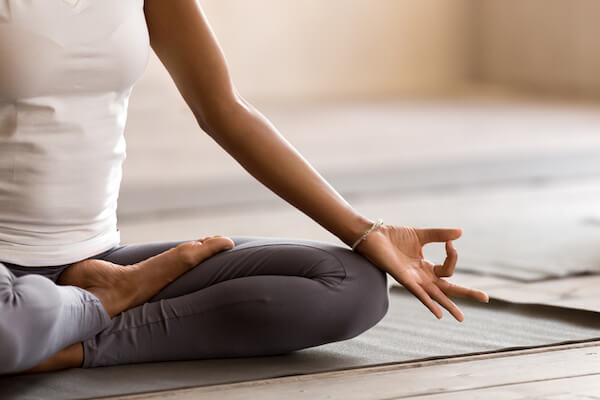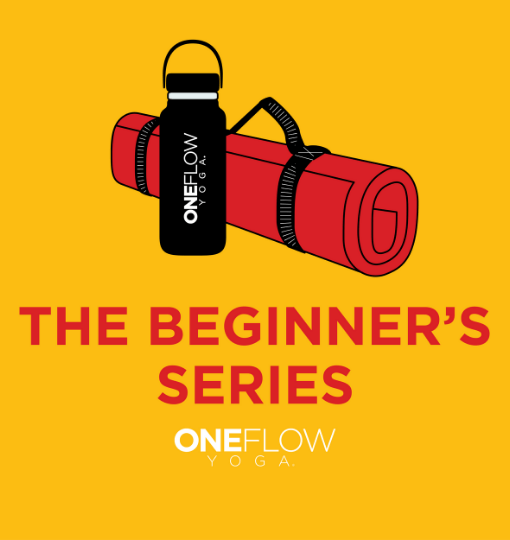Take any yoga class, and you are going to hear the term asana a lot. But what is it?
Asana is the physical practice of yoga and relates to the body. Asana is also another name for the poses or postures of yoga. In Sanskrit, the word asana translates as “seat,” specifically for meditation. Today asana is synonymous with yoga, but it is only one component.
Why bother to explore asana? Because understanding what yoga asana is, where it comes from, and its history opens up the doors for a much richer practice. Yoga becomes less about trying to put your foot behind your head and becomes something more meaningful.
Yoga Asana as Physical Practice
When we speak of asana, we are speaking of the physical practice of yoga. That might seem like a bit of redundancy because of the confusion on what yoga is.
Most modern practitioners initially come to yoga by doing yoga postures or yoga asana. But yoga asana is not yoga. An asana is simply a physical shape that you do with your body.
We use yoga poses to do yoga. But the yoga poses themselves are not yoga.
An analogy might help. Think of yoga as fire. There are many ways to build a fire. You can rub two sticks together, strike flint stone against steel, or magnify the sun with glass. The method, though, is not the fire but a way to start the fire.
Likewise, asana is a way to practice yoga, but it is not the yoga itself. And there are other methods of exploring yoga, such as pranayama, breathing exercises. In other words, you can do yoga without doing asana.

Why Do We Practice Yoga Poses
Ok, if yoga isn’t about yoga postures, why do we do them?
The yoga teacher B.K.S. Iyengar popularized what can be thought of as “Modern Postural Yoga,” which is the practice everyone is most familiar with today. His 1966 book, Light on Yoga, codified 200 postures and has become the primary reference for asana practice.
But in relying on asana alone, a disconnect was created between yoga postures and yoga. Part of this stems from Iyengar’s own lack of knowledge.
“Because Iyengar lacked any formal training in the classical Indian intellectual tradition…he is unlikely to have been too concerned about the role and the value of theoretical contents and backgrounds.
Elizabeth De Michelis, A History of Modern Yoga
What De Michelis is referring to is the vast tradition of yoga thought and philosophy. In these texts, knowledge is often referred to as the “theory” of yoga. However, you have to take that theory and apply it. You have to put the theory into practice.
But Iyengar was not schooled in the theory, so there was no way for him to apply it. For him, asana was the way you did yoga. Iyengar’s method of asana can work, but it might also be reinventing the wheel. There are thousands of years of exploration that has gone into yoga. We don’t need to start from the beginning but can build on what has come before.
We need to be careful about referring to Modern Postural Yoga as its own entity. Instead, the modern practice continues the yoga tradition of experimentation and evolution. That’s exciting because, as a yoga teacher, this is an opportunity to take modern science of the body and mind and couple it with yoga’s wisdom.
The Popularity of Postural Yoga
The popularity of poses has more to do with marketing, which is about making the right offer at the right time.
Yoga succeeds because it is a postural practice. People see it as another form of exercise. To try to market it as a breathing or meditative practice only would doom it.
From personal experience, I can tell you that every time we try to put a meditation class on the studio schedule, we get five people who show up. Yet, add another flow offering, and it does well. This is anecdotal but is backed up by the data.
Vinyasa is the most popular form of yoga in the U.S. and beyond because it is very active. As Americans, it’s baked into our societal DNA that we have to be productive and always be doing something. Yoga asana gives you something to do.
An equally important reason, though, is that it’s fun. When we join or link asanas together and move from one to another fluidly, it feels good in your body.
That’s no small thing. While some purists may contend that yoga has to be serious, there’s also this idea in yoga’s teachings that you have to practice with enthusiasm. Because if you’re not excited about it, you’ll pack it in and do something else.
Our emphasis today on health and wellness makes yoga the ideal physical activity for our time. As a mind-body practice, it is seen as generally being good for you.
But, as we’ll see below, prioritize only asana, and you might miss the mental aspect.
Where Do The Names of Yoga Postures Come From
Asana is a suffix added to the end of yoga postures.
For example, tada, means mountain. Tada plus asana equals tadasana or mountain pose. Here are a few more examples with the asana highlighted.
- Chaturanga dandasana – four limb staff pose
- Ardha chandrasana – half moon pose
- Parivrtta parsvakonasana – revolved side angle pose
Yoga originally came from people looking at nature. It makes sense that yoga postures would take the names of animals and other living creatures, sages, and the earth. There are fish, frogs and locusts, trees, heroes, and cows.
Other postures use body parts, numbers, and directions, like urdhva prasarita ekapadasana.
- Urdhva means upwards.
- Prasarita means to stretch or expand.
- Eka is the number.
- Pada is a foot or leg.
It’s commonly called standing splits.
Using Sanskrit for the names can be helpful, especially if you travel because there’s more agreement on what to call the postures. The poses can vary in English, and I’ve heard all kinds of creative interpretations of various postures, including airplanes, chairs, and wild things.
It also sounds more exotic if you say, “I’m working on janu sirsasana,” rather than “I’m doing head to knee pose.”
BKS Iyengar included these names in his text, which served to curate the postures, but it was his teacher, Krishnamacharya, who was the true innovator. Krishnamacharya blended postures from hatha yoga, gymnastics, wrestling, and calisthenics to create something new.
How Many Yoga Postures are There
Technically, there are 200 yoga postures. These come from Iyengar’s book, Light on Yoga, but of those, you only see about 50 regularly in yoga classes.
Mythically, there are 8.4 million postures, a number cited in a yoga text called the Gheranda Samhita. Whenever you see a large number like that in yoga, it just means “very big” or “more than you can ever do.”
Benefits of Yoga Asana
As a physical practice, yoga asana is highly effective at:
- Strengthening & Toning Your Body
- Increasing Your Flexibility and Endurance
- Lowering inflammation thus minimizing disease
- Injury rehabilitation
This is just for starters. Today’s yoga asana is low-impact, athletic, and often energetic. You can read more about the benefits of yoga here.
It can have a cardio component, which strengthens your heart and can help with weight management.
As incredible and real as yoga’s physical benefits are, yoga asana truly excels in mental and emotional benefits. If you know how to use them, yoga poses can be a doorway to a calmer, clearer mind and a feeling of joy and peacefulness. For that, we have to explore another meaning of asana.

Asana A Seat For Meditation
The original posture was a seated one because yoga is about paying attention. It’s generally easier to focus while sitting down rather than balancing on one leg.
We call the act of paying attention meditation.
But trying to sit still can be a challenge. And here is the brilliance of asana. Asana gives us another way to meditate.
How Asana Helps Meditation:
- Give us something to do.
- It’s easier to move than sit still.
- We can pay attention to the movement and physical sensations.
- Asana becomes a moving meditation.
In the yogic text The Bhagavad Gita, Arjuna, the yoga student, asks Krishna, the teacher, which is better, to act or to have the awareness that comes from paying attention. Krishna responds that you want your actions to be informed by awareness. You want to move consciously through the world.
If we do asana without being mindful of how we move, we cannot call it yoga. But take the time to connect action and awareness, and you create a powerful way to explore the world.
Yoga works from the inside out or the outside in. Asana is the outside in. It uses your body to explore the thoughts, feelings, and emotions that go on within you. How do you know yourself? Notice what you do. Of course, actions in yoga also include thoughts and words, so notice what you think and what you say.
You can also use the way yoga works to benefit your mental and emotional health. By moving deliberately, you can affect what you think and how you feel. Remember, our outward way of moving is a proxy for our mind. By changing the way, you move you affect your inner state.
This takes time and is called “the work.”
History of Asana
Much has been written about the history of asana. But it’s helpful to clarify a couple of points that get missed in all of the detail.
Yoga Sutras of Patanjali
The Yoga Sutras of Patanjali is arguably the most studied yoga text in the U.S. today.
But asana did not come from Patanjali.
Asana is indeed the third limb of Patanjali’s eight, but that references the seat of meditation and the body as your outermost layer.
“One then focuses directly on the outer layer of one’s immediate self, the body. Through asana, comfort and steadiness are gained.”
Christopher Chapple
Patanjali was an ascetic who subscribed to the liberation model of yoga. That’s a long conversation for another day, but suffice it to say that the body wasn’t important to Patanjali.
“For Patanjali, posture is essentially the immobilization of the body.” Georg Feuerstein
Patanjali didn’t want to have anything to do with the body. He was trying to move from the gross to the subtle.
Hatha yoga is responsible for changing that perception. Before hatha came along, the body was not well regarded in yoga because it has problems. Bodies have needs like food, and they generate waste products. Bodies can be kind of icky.
But to the authors of the yogic text, The Hatha Yoga Pradipika, the Naths, the body was a temple. You can trace the line from thinking the “body is something to take care of” to asana yoga. After all, it is a practice to help strengthen and make the body healthier.
For a fuller explanation of hatha yoga click here.
The Possibility Of Modern Yoga Asana
Where does that leave us today? I think we are in a place where we can take the teachings of the past and bring them together with our best knowledge of today.
Asana can be the place where we put the theory into practice. It can be the medium with which we pay attention, notice, and observe.
In turn, we can use modern anatomy and physiology, biomechanics and kinesthetics, neuroscience, and psychology to inform our explorations on the mat.
Does that make yoga asana any less legitimate than traditional yoga? No, because however you get to yoga, there’s an opportunity to notice things, and when you do, that’s when it gets exciting. In yoga, it’s not what you do but how you do it. To move with consciousness is to fulfill the intent of yoga. Yoga asana gives us that option.



